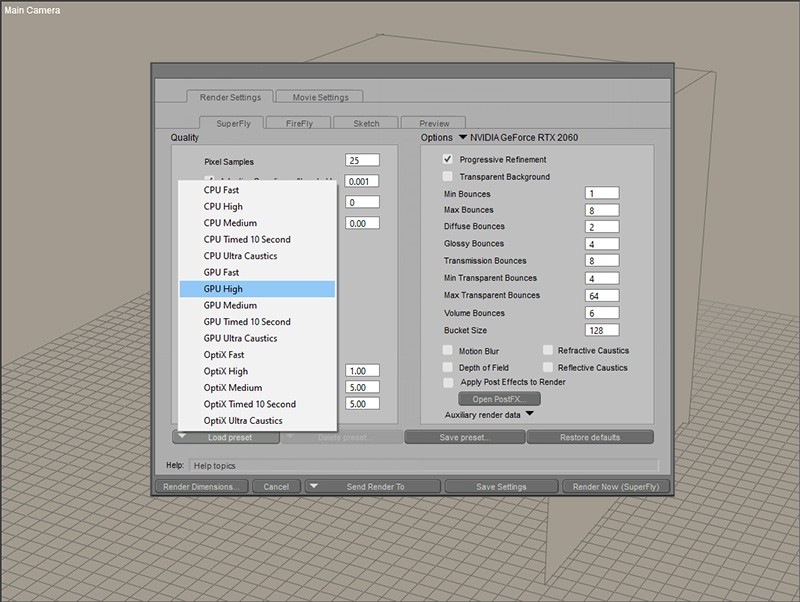We have previously talked about Poser’s SuperFly renderer, our photo-realistic renderer grounded on the Blender Project’s Cycles engine, more specifically, Cycles X, the latest iteration of this render engine. SuperFly is capable of rendering astounding images and animations, so we really encourage you to dig into lighting and materials if you haven’t done so yet.
For this test, I created a very simple scene consisting of four planes and a red sphere. I added a simple spotlight to light the scene.
For this test, I created a very simple scene consisting of four planes and a red sphere. I added a simple spotlight to light the scene.

You can see a wireframe view of the scene here, so you see where the spotlight is located.

How Rendering Works
First, let’s try rendering the scene with GPU rendering. To render the scene, I chose the GPU High setting, and the rendered image is shown below.

The scene is rendered pretty fast, but, as you can see, it lacks any light bounces. This is because GPUs by default don’t support certain calculations that are required for global illumination.

Now, if we try rendering the scene using the CPU High setting, this is what we get.

This one took a little over a minute to render and shows global illumination, because, unlike GPUs, CPUs actually support the calculations needed for global illumination.
If you are using a more modern video card, you can use OptiX rendering, which is GPU-supported raytraced rendering. OptiX rendering is pretty fast, and you can get very comparable results to CPU rendering.

Lastly, we can also make the material emit light by adding color to the Emission parameter of the material. If we change the Emission color to red, and Emission Strength to 1, we get this (rendered with OptiX).

One thing we can see is all the images look noisy. This is where Poser’s denoiser comes into play. If we open the PostFX window, we can activate the “Apply Intel Denoise” checkbox to get rid of that.

While we are in the PostFX window, we can play with other settings like Saturation, Exposure, and Bloom. Adjusting these settings can have a dramatic impact on the look of your rendered scene.

As a bonus note, the material used for this exercise is a glazed ceramic material made for Cycles (walls and spheres use the same material, with a different color). Since Poser 13 uses Cycles, Blender Cycles materials can be reproduced in Poser without any problem. To create the material I used in this scene, just follow this Blender tutorial

.png)






